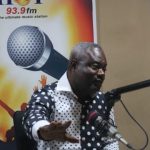The figure is 2% of the 948,094 people who undertook HIV testing from January to June 2022. They were from different segments of the population, namely: men, pregnant women, non-pregnant women, homosexuals and female sex workers.
The Programme Manager of the National STIs and HIV/AIDS Control Programme, Dr Stephen Ayisi Addo, who made this known in an interview with the Daily Graphic in Accra, said even though last year’s half year figure was 25,545, this year’s figure was too high.

“The figure for this new infection is too high, so we need to intensify education to let people know that HIV is still real; it is around and there must be constant reminders. We have to let people know that they need to stick to the prevention strategies, whether they are children or adults,” he said.
He said of the number of people who presented themselves for testing, 4% each were from the Bono, Ahafo, Eastern and Western North regions, while the Ashanti and the Greater Accra regions had 3% each.
For the rest of the regions, he said, while some had 2%, others had a percentage each.
Dr Ayisi Addo said most of the 23,495 people who tested positive had since been put on HIV treatment.
Dr Ayisi Addo called for continuous education on HIV; the Ghana AIDS Commission should continue its advocacy; NGOs should play their roles in communities, while metropolitan, municipal and district assemblies should use the one per cent fund on HIV allocated to them on the prevention of the disease and other linkage services.
“Let us all work together to fight the stigma and discrimination against AIDS, so that we encourage people to go for voluntary testing and get treatment. If we do this, we can achieve our 95/95/95 target,” he added.







